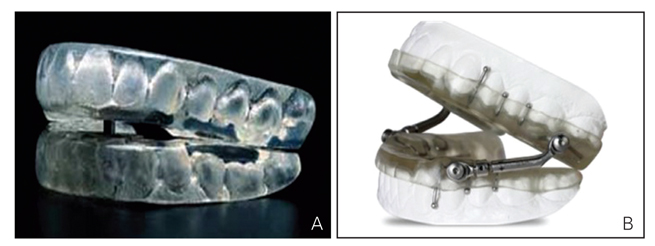J Korean Med Assoc.
2013 May;56(5):410-422.
Sleep disorders medicine
- Affiliations
-
- 1Department of Neurology, Samsung Medical Center, Sungkyunkwan University School of Medicine, Seoul, Korea. sbhong@skku.edu
Abstract
- Sleep comprises one third of human life and is very important for maintaining healthy mental and physical states. Sleep disorders disturbing normal sleep are very common and may induce serious consequences. Sleep disorder medicine is based on the concept of two different states (waking and sleep) of the human brain. The problems of the waking conscious state affect sleep and problems during sleep also affect daytime mental and physical activities. The common symp-toms of patients with sleep disorders are excessive daytime sleepiness, a decrease in alertness, and fatigue. To detect sleep disorders, we should understand the physiology of normal sleep. Normal sleep consists of non-rapid eye movement (75% to 80%) and rapid eye movement (20% to 25%) sleep. The International Classification of Sleep Disorders second edition lists 77 different sleep disorders divided into 8 categories. Clinical approaches to sleep disorder patients should include detailed history taking including sleep history, a sleep questionnaire, sleep diary, physical examination including the nasal/oral cavities and airway, and neurological/psychological examination. The common sleep disorders are obstructive sleep apnea, insomnia, narcolepsy, restless legs syndrome, rapid eye movement sleep behavior disorder, and circadian rhythm sleep disorder. We should learn the characteristic clinical features of each sleep disorder and how to detect and treat them. We need a more active effort to educate physicians about sleep disorder medicine and should try large sample, long-term, and prospective studiesto reveal the pathophysiology and enhance the treatment of sleep disorders. Sleep disorders are common, serious, and treatable. However, most patients with sleep disorders are underdiagnosed and not treated appropriately due to lack of knowledge of sleep disorder medicine. The Ministry of Health and Welfare of South Korea should focus more attention on and provide more support for timely diagnosis and treatment of sleep disorders.
Keyword
MeSH Terms
Figure
Reference
-
1. Walsh J. Sleep disorders medicine. Rochester: Association of Professional Sleep Societies;1986.2. Kales A, Kales JD. Sleep disorders: recent findings in the diagnosis and treatment of disturbed sleep. N Engl J Med. 1974; 290:487–499.3. Hong SB, Joo EY. Normal sleep and examination of the patients with sleep disorders. J Korean Sleep Res Soc. 2004; 1:1–5.4. Hirshkowitz M, Moore CA, Hamilton CR 3rd, Rando KC, Karacan I. Polysomnography of adults and elderly: sleep architecture, respiration, and leg movement. J Clin Neurophysiol. 1992; 9:56–62.5. Ohayon MM, Carskadon MA, Guilleminault C, Vitiello MV. Meta-analysis of quantitative sleep parameters from childhood to old age in healthy individuals: developing normative sleep values across the human lifespan. Sleep. 2004; 27:1255–1273.
Article6. Association of Sleep Disorders Centers and the Association for the Psychophysiological Study of Sleep. Diagnostic classification of sleep and arousal disorders. 1979 first edition. Sleep. 1979; 2:1–154.7. American Academy of Sleep Medicine. The international classification of sleep disorders: diagnostic and coding manual. 2nd ed. Westchester: American Academy of Sleep Medicine;2005.8. Coleman RM, Roffwarg HP, Kennedy SJ, Guilleminault C, Cinque J, Cohn MA, Karacan I, Kupfer DJ, Lemmi H, Miles LE, Orr WC, Phillips ER, Roth T, Sassin JF, Schmidt HS, Weitzman ED, Dement WC. Sleep-wake disorders based on a polysomnographic diagnosis: a national cooperative study. JAMA. 1982; 247:997–1003.
Article9. Kales A, Soldatos CR, Kales JD. Taking a sleep history. Am Fam Physician. 1980; 22:101–107.10. Kales A, Kales JD. Evaluation and treatment of insomnia. New York: Oxford University Press;1984.11. Kales JD, Carvell M, Kales A. Cassel CK, Reisenberg DE, Sorensen LB, editors. Sleep and sleep disorders. Geriatric medicine. 2nd ed. New York: Springer-Verlag;1990. p. 562.
Article12. Johns MW. A new method for measuring daytime sleepiness: the Epworth sleepiness scale. Sleep. 1991; 14:540–545.
Article13. Kim J, In K, Kim J, You S, Kang K, Shim J, Lee S, Lee J, Lee S, Park C, Shin C. Prevalence of sleep-disordered breathing in middle-aged Korean men and women. Am J Respir Crit Care Med. 2004; 170:1108–1113.
Article14. Banno K, Kryger MH. Sleep apnea: clinical investigations in humans. Sleep Med. 2007; 8:400–426.
Article15. Park HS, Joo EY, Hong SB. Sleep onset insomnia. J Korean Sleep Soc. 2009; 6:74–85.
Article16. Cho YW, Shin WC, Yun CH, Hong SB, Kim J, Earley CJ. Epidemiology of insomnia in Korean adults: prevalence and associated factors. J Clin Neurol. 2009; 5:20–23.
Article17. Hauri PJ. Guilleminault C, editor. Evaluating disorders of initiating and maintaining sleep (DIMS). Sleeping and waking disorders: indications and techniques. Menlo Park: Addison-Wesley;1982. p. 225.18. Cho YW, Shin WC, Yun CH, Hong SB, Kim JH, Allen RP, Earley CJ. Epidemiology of restless legs syndrome in Korean adults. Sleep. 2008; 31:219–223.
Article19. Joo EY, Hong SB. Light therapy in circadian rhythm sleep disorders. J Korean Sleep Soc. 2005; 2:33–38.
Article20. Han SJ, Joo EY, Cho JW, Hong SB. The usefulness of repeated multiple sleep latency test for the diagnosis of narcolepsy. J Korean Sleep Soc. 2008; 5:39–42.
Article



